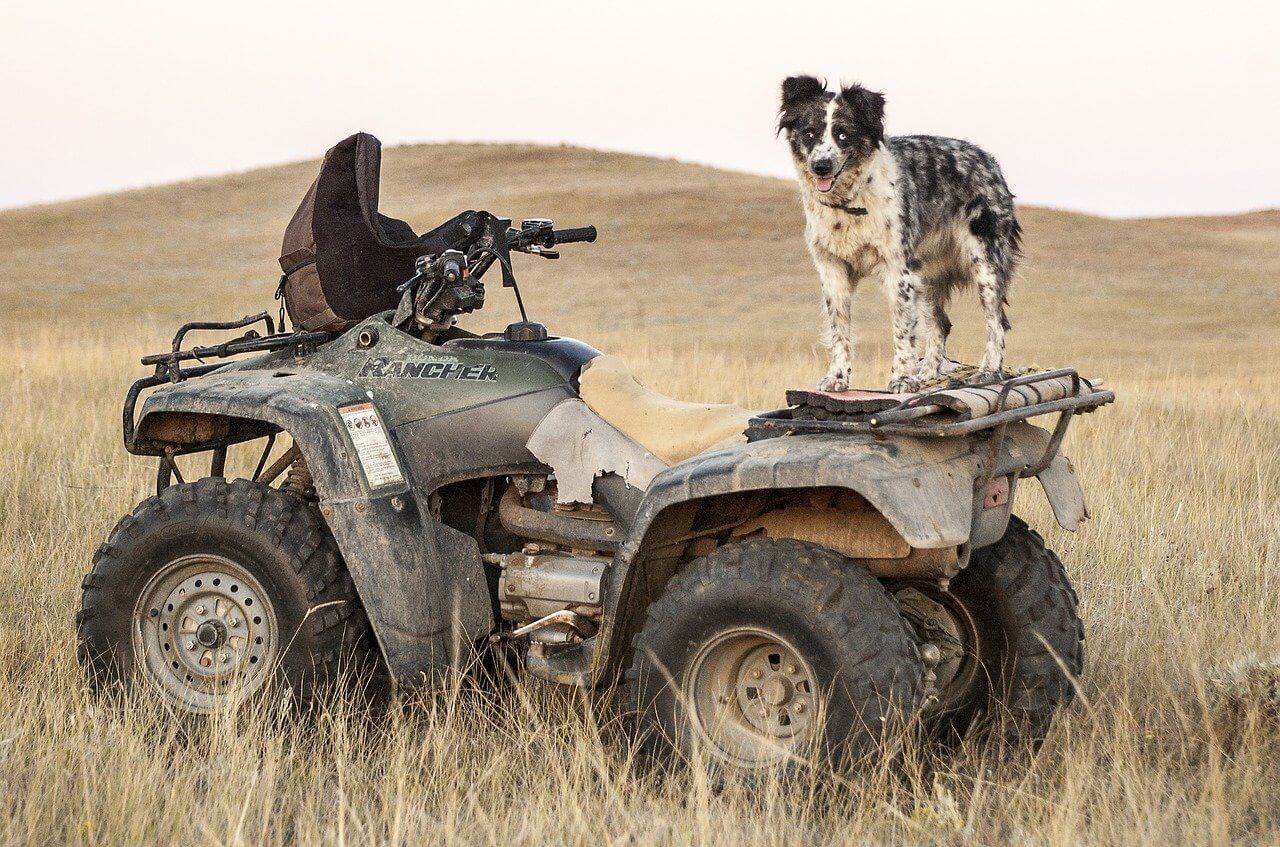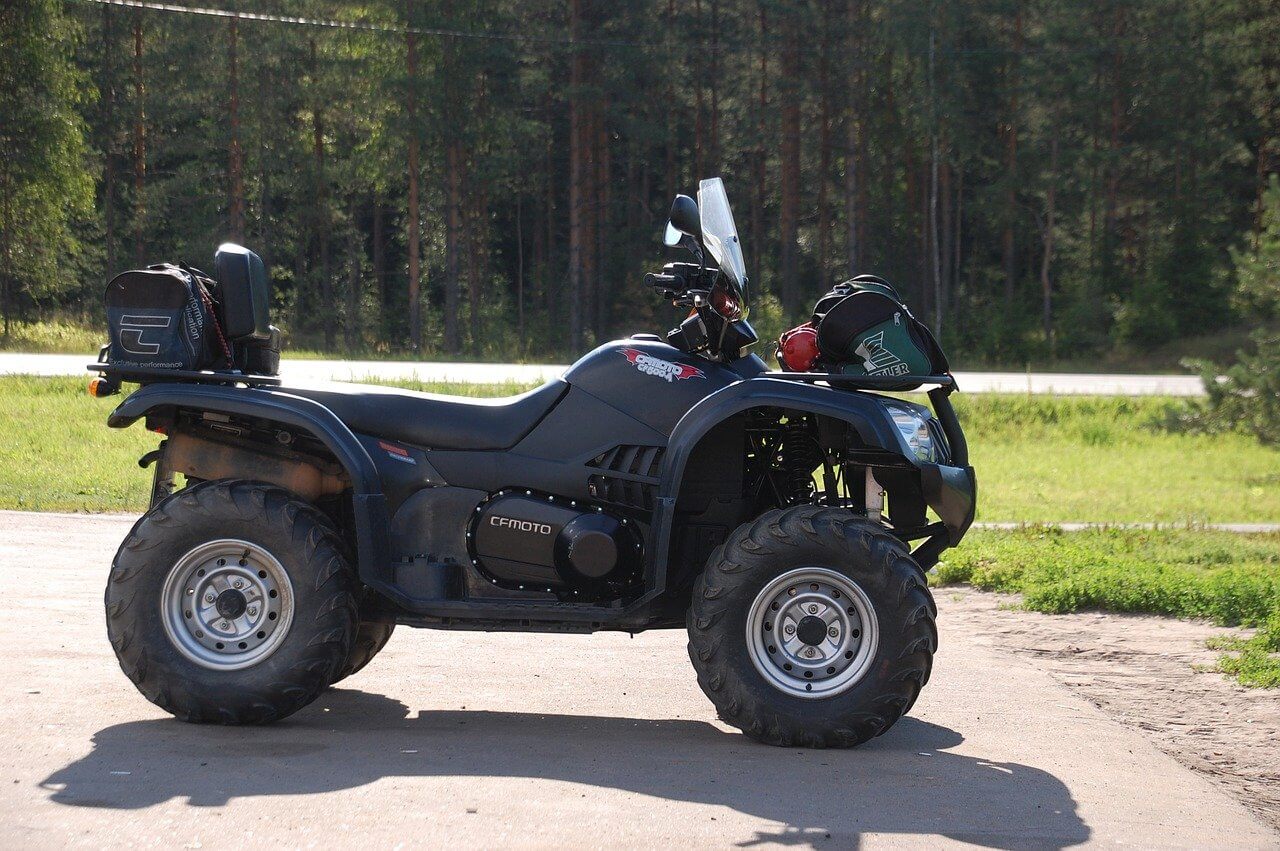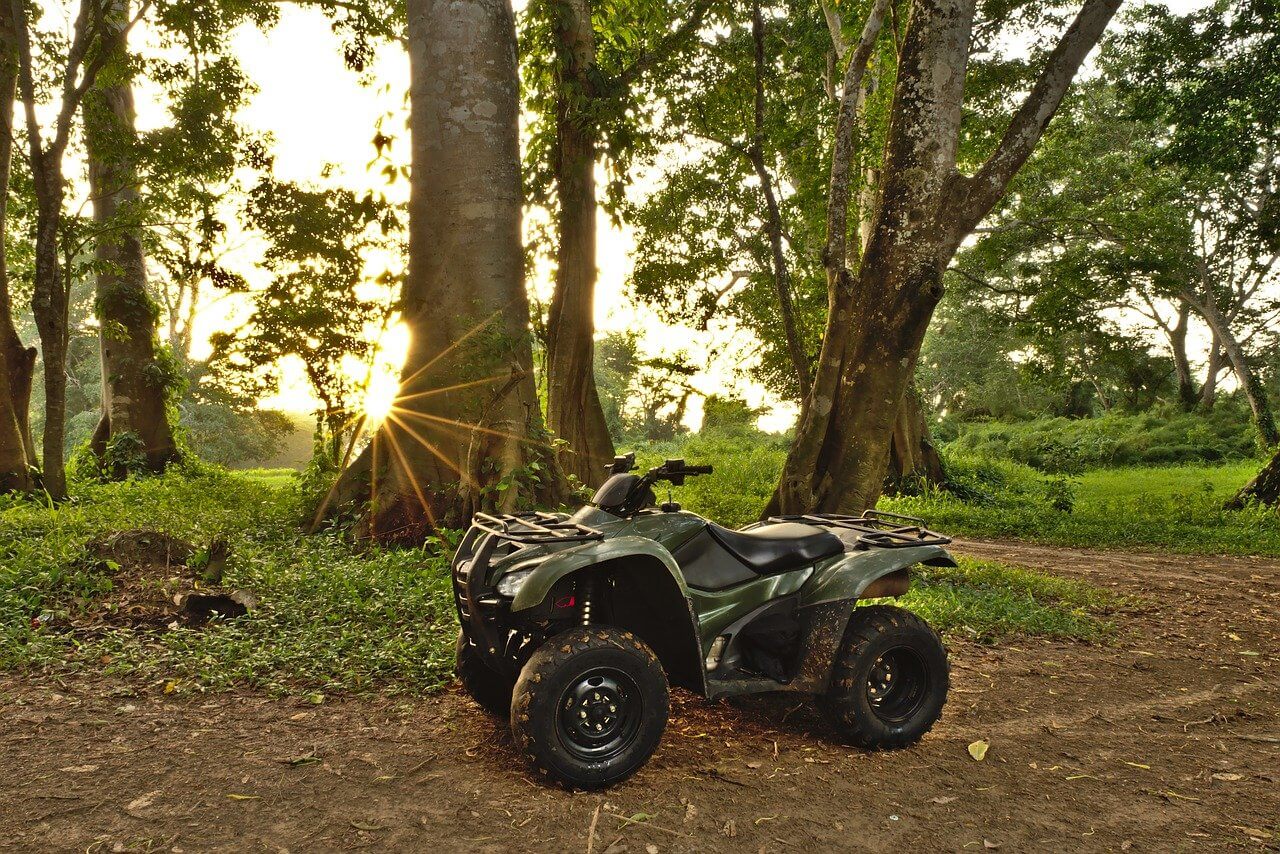Buying a used ATV can save you money compared to getting a new one. But it comes with its own risks, and could end up being the more expensive option. So what to look for when buying a used ATV for your farm?
If you want an ATV that’s stress-free, and guaranteed to be reliable for years to come, just buy a new one. But if you are able to put in the time and effort to research a good quality used ATV, and thoroughly inspect it, then you can save money and still enjoy a reliable vehicle.
What You'll Learn Today
Should You Buy a Used ATV?

Whether you should buy a used ATV depends on what kind of ATV you are looking for, what you’ll use the ATV for, how much money and time you have to put towards maintaining a used ATV, and of course, your budget.
The biggest challenge with buying a used ATV is that it’s usually a hit or miss. You could be lucky and get a well-maintained ATV, or end up with one that spends more time in the garage than outdoors.
If you talk to many ATV owners, they’ll advise that if you have the money, just get a new four wheeler. There are several advantages to this.
One, you get guaranteed reliability over several years. Two, new ATVs come with the manufacturer’s warranty, which reduces maintenance costs. Three, you don’t have to worry about a hidden issue suddenly appearing after you’ve bought the ATV.
But if you are on a tight budget, a new ATV may not be an option especially if you want a well powered ATV with various accessories and extras like EPS (electric power steering).
In that case, it’s worth trying the used ATV market.
Another scenario where a used ATV makes sense is if you plan to use the ATV lightly, maybe for drives around the farm on smooth roads. Since you won’t be putting the ATV under a lot of stress, you can get away with buying an older ATV.
But if you are looking for a utility ATV for plowing, snow clearing, or carrying loads, you should probably get a new one.
New is also the best option if you don’t want to spend a lot of money on repairs and your afternoons repairing minor (and sometimes major) mechanical issues.
How Do You Inspect a Used Four Wheeler?

One reason why buying a used ATV is not a guaranteed money-saver is that most of the used four wheelers you’ll come across have taken a lot of abuse.
They’ve probably towed heavy loads, been taken on rough trails, and probably been dunked in water or mud more than a few times.
The ATV may look good on the outside, but it’s hiding a ton of problems underneath that will cost you a lot of money to fix.
The most important thing when buying a used ATV is to spot these problems. Let’s go over the most important areas to inspect.
1. Wheels & Axles
We recommend carrying a jack or lift with you when you go to inspect the ATV. Lifting the wheels off the ground allows better inspection. If this is not possible, you can also take the ATV to a shop where an experienced mechanic can do the inspection for you.
Rock each tire side to side and check for any play. If the tire wiggles, the joints or bearings are likely worn out. You may even get a squeaking noise on a poorly maintained ATV.
Rocking the wheels can also reveal any issues with steering and suspension.
Also check the condition of the tires. See if the tread is too low, and look for cracks on the side wall. Lifting the ATV lets you inspect the inside of the wheel with ease.
Next, inspect the CV axles. A word of advice here: if possible, avoid any ATV with a lift kit. Lifting puts more stress on the axles, and can cause more problems than it’s worth.
In fact, avoid ATVs with major aftermarket modifications like a big bore kit or a snorkel (a snorkel is also a sign of a mudding ATV, which you should probably avoid).
Some aftermarket upgrades are okay though, such as a skid plate, beadlock rims, a sportier exhaust, or a winch.
Back to the axles, focus on the CV joints where the boots are located. These boots keep grease within the joints. If they have cracks or holes, grease will leak out and dirt and water will get in and damage the joints.
Run your hand between the pleats on the boots, and feel for any oil. If you feel any, you probably need new CV boots.
2. Frame & Body
While the ATV is still up in the air, inspect the frame including the handlebars. Look for any dents, cracks, rusting and paint chips. Any sort of damage can indicate a previous crash, or an old repair job.
If you have a tape measure, check the distance between wheels and measure the width of the ATV. Make sure measurements are similar to the factory specs. If they vary significantly, it might be a sign of a damaged frame.
Also check the body of the ATV. Look for cracked and faded plastic, and inspect the condition of the seat.
Not all damages are deal breakers. Some like some cracked plastic can help you get the ATV at a lower price.
3. Engine & Fluids
Check the level and quality of fluids. Check for any metal particles or shavings in the oil, as this is a sign of some serious internal wear.
Make sure the engine oil is not dirty – it should be translucent, not inky black. But don’t be fooled by new oil, as the owner might have added it to hide other issues.
Check for any leaks from the gasket and valve covers, and inspect the condition of the oil and air filters. Dirty filters are typically a sign of poor maintenance.
To be completely sure the engine is in a good condition, it’s best to have a mechanic inspect the ATV. They can even check the fuel injection system (carburetor or fuel injection system), to determine if you need a new one.
4. Other Parts
Other components to inspect include the brake pads and rotor, electrical system including lights and wiring, chain and sprocket, battery and stator, and any other parts we may have left out.
We recommend writing a checklist so you don’t forget what to inspect.
Here’s a video explaining all the important areas to inspect.
5. Test Drive
Inspecting the ATV on the driveway is good, but driving it is better. It tells you how well it handles at speed.
Check the steering, test the brakes, feel for any vibrations, and listen for odd noises.
How Many Miles Should A Used ATV Have?
Generally, it’s best to stick with used ATVs that have less than 5,000 miles on them.
5k miles ensures the ATV is not too beaten up. Even well maintained ATVs will experience significant wear after 5,000 miles, and you could be looking at some pricey part replacements.
A sub 5k miles four wheeler also ensures you get another 5,000 to 10,000 miles out of it.
That said, you can get a low-mileage ATV that’s been badly maintained and needs a lot of work. You can also find a high-mileage ATV (especially from reliable brands like Honda), that still runs like new.
No matter the mileage, do a thorough inspection.
Questions To Ask When Buying A Used ATV?

In addition to an inspection, you’ll also need some information from the ATV owner. Here are the most important questions to ask.
- Why are you selling this ATV?
- What were you using the ATV for? – will help you gauge how much abuse the ATV has taken.
- How long have you had the ATV for?
- How many people have owned this ATV? – too many owners could be a sign of a problematic vehicle.
- Has the ATV ever been involved in an accident?
- Where do you store the ATV? If it’s stored outdoors, it could have hidden issues. If possible, check the storage area and look for mystery fluids on the ground.
- What’s the ATV’s service history? If there are documents and receipts, ask for them.
What Is The Best Used ATV To Buy?
Look for a low to mid mileage ATV that has been well maintained.
Avoid ATVs with major mods, that are too old or high-mileage, have signs of water damage, and those that have seen extreme use such as mudding.
What Is The Most Reliable ATV On The Market?
Honda is usually on top of the list when it comes to reliability. Used Honda ATVs are especially great for utility applications like farming.
It’s no wonder that some of the highest mileage ATVs you’ll come across (10,000+ miles) are Hondas.
Other reliable brands include Yamaha, Suzuki, Arctic Cat and Can-Am.
With certain brands like Polaris, there’s a lot of debate. Many people love them for their performance and sportiness, but reliability is not as high as other brands.